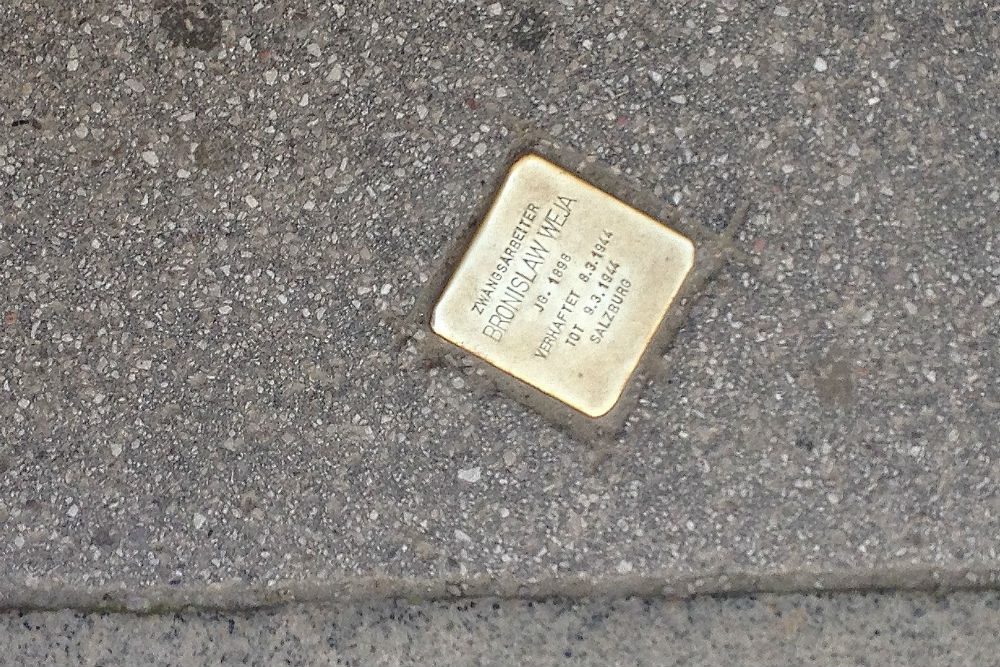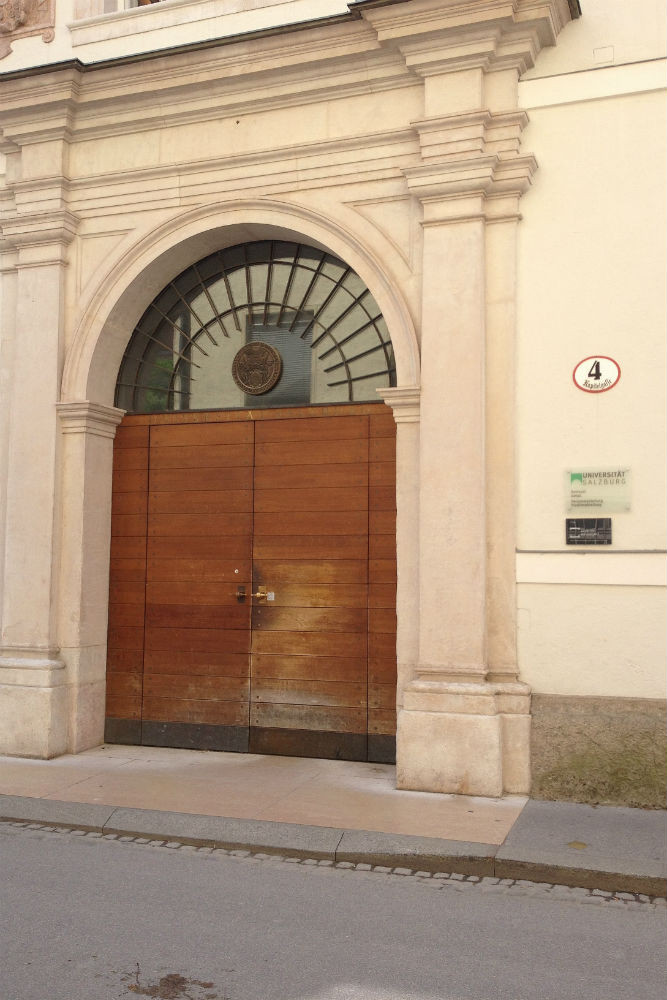Stumbling Stone Kapitelgasse 4
This brass memorial (Stolperstein or stumbling stone) commemorates
Bronislaw Weja, born 1898, arrested 8 March 1944, dead 9 March 1944, Salzburg.
Bronislaw Weja was an unmarried Roman Catholic Polish citizen who was living in Poland when he was conscripted into forced labor during WWII. The police registered him in Salzburg in October 1943, and he last worked as an unskilled laborer in the so-called Kapitelhaus, which belonged to the Nazi government.
The following year, he was arrested and interrogated by the Gestapo – for "breaking his labor contract" (one source says he presumably changed his workplace without permission). The Nazis reported that he hanged himself in his cell in the State Court jail, but there was not even a judge’s order for his arrest much less imprisonment. He was buried, as suicides were, in a remote corner of the cemetery – suicides and so-called suicides were commonly buried in unmarked graves, a practice which hid any potential signs of non-suicide violence.
"Stolpersteine" is an art project for Europe by Gunter Demnig to commemorate victims of National Socialism (Nazism). Stolpersteine (stumbling stones) are small, 10x10cm brass plaques placed in the pavement in front of the last voluntary residence of (mostly Jewish) victims who were murdered by the Nazis. Each plaque is engraved with the victim’s name, date of birth, and place (mostly a concentration camp) and date of death. By doing this, Gunter Demnig gives an individual memorial to each victim. One stone, one name, one person. He cites the Talmud: "A human being is forgotten only when his or her name is forgotten."
Do you have more information about this location? Inform us!
Source
- Text: Fedor de Vries & Anne Palmer
- Photos: John Mark Shorack (1, 2), Marie-Christine Vinck (3, 4)
- Salzburg Stumbling Blocks: Bronislaw Weja
- Stolpersteine.eu
Nearby
Museum
Point of interest
Monument
- War Memorial Feldkanonenregiment Nr. 41 - Salzburg
- Memorial Rainer Regiment - Salzburg
- War Memorial Salzburger Turnverein - Salzburg
Cemetery
- Austrian/German War Graves Salzburg - Salzburg
- Mass Graves Soviet Forced Laborers Salzburg - Salzburg
- Dutch War Cemetery Salzburg - Salzburg





